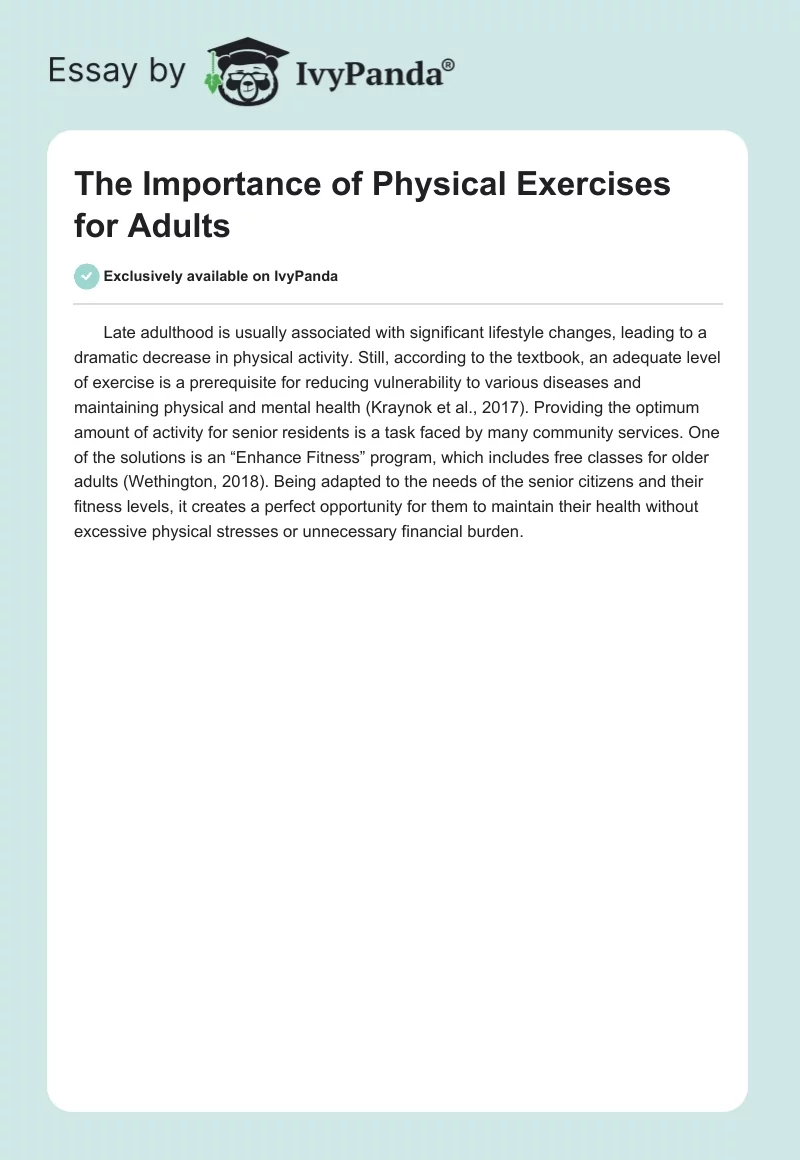Late adulthood is usually associated with significant lifestyle changes, leading to a dramatic decrease in physical activity. Still, according to the textbook, an adequate level of exercise is a prerequisite for reducing vulnerability to various diseases and maintaining physical and mental health (Kraynok et al., 2017). Providing the optimum amount of activity for senior residents is a task faced by many community services. One of the solutions is an “Enhance Fitness” program, which includes free classes for older adults (Wethington, 2018). Being adapted to the needs of the senior citizens and their fitness levels, it creates a perfect opportunity for them to maintain their health without excessive physical stresses or unnecessary financial burden.
Reference
IvyPanda. (2022, February 26). The Importance of Physical Exercises for Adults. https://ivypanda.com/essays/the-importance-of-physical-exercises-for-adults/
Work Cited
"The Importance of Physical Exercises for Adults." IvyPanda, 26 Feb. 2022, ivypanda.com/essays/the-importance-of-physical-exercises-for-adults/.
References
IvyPanda. (2022) 'The Importance of Physical Exercises for Adults'. 26 February. (Accessed: 20 August 2025).
References
IvyPanda. 2022. "The Importance of Physical Exercises for Adults." February 26, 2022. https://ivypanda.com/essays/the-importance-of-physical-exercises-for-adults/.
1. IvyPanda. "The Importance of Physical Exercises for Adults." February 26, 2022. https://ivypanda.com/essays/the-importance-of-physical-exercises-for-adults/.
Bibliography
IvyPanda. "The Importance of Physical Exercises for Adults." February 26, 2022. https://ivypanda.com/essays/the-importance-of-physical-exercises-for-adults/.

